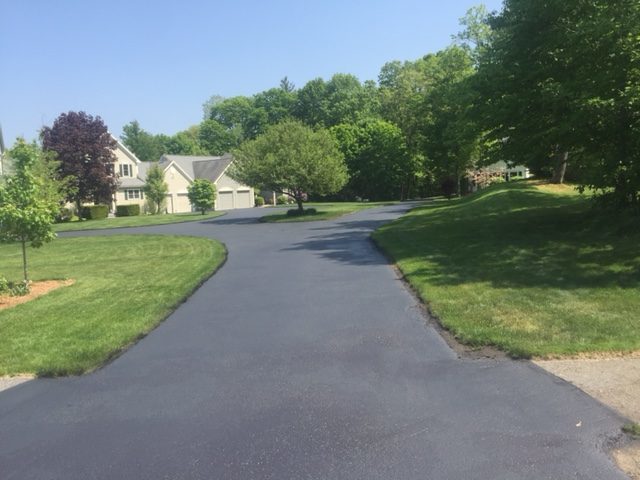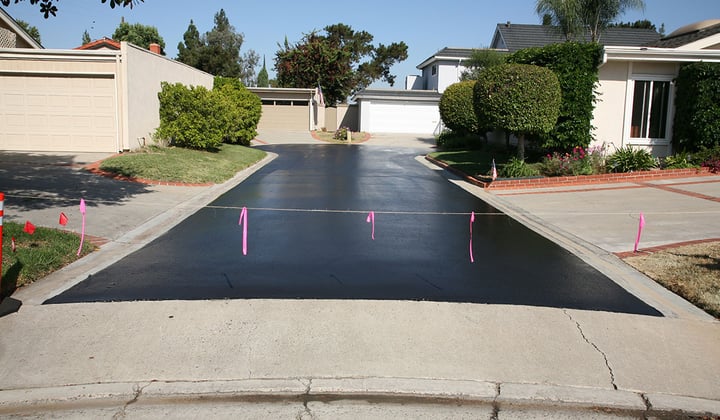Transform Your Home's Aesthetic appeals: Commercial Parking Lot Leading and Asphalt Sealing Solutions
Transform Your Home's Aesthetic appeals: Commercial Parking Lot Leading and Asphalt Sealing Solutions
Blog Article
Hot Mix Asphalt: A Sustainable Service for Pavement
Warm Mix Asphalt (HMA) has become a leading lasting selection for pavement options, supplying a myriad of ecological advantages and innovative modern technologies. Its ability to reuse products and decrease energy usage provides a compelling instance for its adoption in roadway construction jobs. Additionally, the long-term efficiency and durability of HMA make it a recommended choice for facilities growth. As the demand for environment-friendly building and construction methods grows, checking out the subtleties of HMA's sustainability can offer beneficial insights into the future of pavement solutions.
Ecological Advantages of Warm Mix Asphalt

Furthermore, Hot Mix Asphalt helps to minimize urban warm island results. Its dark shade absorbs sunlight, reducing the amount of heat mirrored back right into the environment compared to lighter-colored sidewalks. This can decrease ambient temperature levels in urban areas, decreasing the need for air conditioning and inevitably minimizing power usage.
Additionally, Hot Mix Asphalt contributes to improved stormwater management. Its permeable nature enables water to reenergize and penetrate the pavement groundwater products, decreasing overflow and the risk of flooding. These environmental advantages make Hot Mix Asphalt a sustainable option for leading roads and freeways.
Energy Performance in HMA Manufacturing
Is energy efficiency an essential variable in the manufacturing of Warm Mix Asphalt (HMA)? Absolutely. Energy plays a substantial duty in the manufacturing of HMA, impacting both expense and environmental sustainability. One vital element of energy effectiveness in HMA manufacturing is the usage of cozy mix asphalt (WMA) innovations (hot mix asphalt). WMA enables for the mixing and positioning of asphalt at reduced temperature levels compared to conventional hot mix asphalt, causing decreased energy consumption throughout production. This process not just lowers gas use yet additionally reduces greenhouse gas exhausts, making it a much more environmentally pleasant alternative.
Furthermore, developments in plant technologies have resulted in more energy-efficient HMA manufacturing procedures. Modern plants are designed with features like recycled asphalt pavement (RAP) handling abilities, effective heater systems, and improved insulation, all adding to power financial savings. By maximizing energy use in HMA manufacturing, the sector can lower its carbon impact while preserving high-grade sidewalk products. Power performance is, for that reason, an important factor to consider in making certain the sustainability of click to read Hot Mix Asphalt production.
Recyclability of Hot Mix Asphalt
The recyclability of Hot Mix Asphalt (HMA) is a critical facet of its sustainability and long-term environmental influence. HMA is one of one of the most recycled products in the United States, with over 100 million lots why not try here of recovered asphalt pavement (RAP) being reused each year in brand-new pavement building. Recycling HMA provides a number of environmental advantages, such as reducing the need for virgin materials, lowering energy consumption throughout manufacturing, and reducing the quantity of waste sent to garbage dumps.
The process of recycling HMA involves crushing the existing pavement, squashing it right into smaller sized items, and mixing it with new accumulation and asphalt binder to produce a recycled mix. Overall, the recyclability of HMA plays a considerable role in promoting lasting techniques within the sidewalk sector.

Long-Term Efficiency of HMA
Asphalt pavements show longevity and strength over an extended duration, reflecting the lasting performance of Hot Mix Asphalt (HMA) In addition, improvements in HMA technology, such as the usage of polymer-modified binders and warm mix asphalt, have further improved the longevity and durability of HMA pavements. By prioritizing quality building and upkeep practices, HMA continues to show itself as a sustainable and affordable service for long-lasting sidewalk infrastructure.

HMA: Sturdiness and Sustainability
Demonstrating both resilience and sustainability, Warm Mix Asphalt (HMA) has actually come to be a cornerstone in the building and construction of lasting pavement infrastructures - hot mix asphalt. HMA's longevity stems from its ability to stand up to hefty tons, harsh weather, and high website traffic quantities, making it a trustworthy choice for roads, freeways, and flight terminal paths. The composition of HMA, which generally includes accumulations, binder, and filler, plays a crucial function in boosting its durability and resistance to deterioration
Moreover, HMA's sustainability hinges on its recyclability and energy-efficient production procedure. The ability to recycle redeemed asphalt pavement (RAP) in new HMA mixes lowers the demand for virgin materials and minimizes the ecological effect of pavement building and construction and upkeep. Furthermore, the power efficiency of producing HMA lies in its reduced blending temperature levels contrasted to other pavement materials, leading to lowered energy usage and greenhouse gas discharges.
Verdict
In verdict, warm mix asphalt (HMA) supplies a lasting Website option for pavement with its ecologically pleasant attributes. HMA's recyclability, energy effectiveness in manufacturing, and lasting longevity make it an environment-friendly choice for road building.
HMA is one of the most recycled materials in the United States, with over 100 million heaps of recovered asphalt sidewalk (RAP) being recycled every year in new sidewalk building and construction.The procedure of recycling HMA entails milling the existing sidewalk, squashing it right into smaller sized pieces, and mixing it with new aggregate and asphalt binder to create a recycled mix.Asphalt sidewalks show resilience and resilience over an extended period, reflecting the long-term efficiency of Warm Mix Asphalt (HMA) Additionally, improvements in HMA modern technology, such as the usage of polymer-modified binders and warm mix asphalt, have even more improved the durability and longevity of HMA pavements. The capacity to reuse reclaimed asphalt pavement (RAP) in brand-new HMA blends decreases the need for virgin materials and reduces the ecological influence of sidewalk building and construction and maintenance.
Report this page